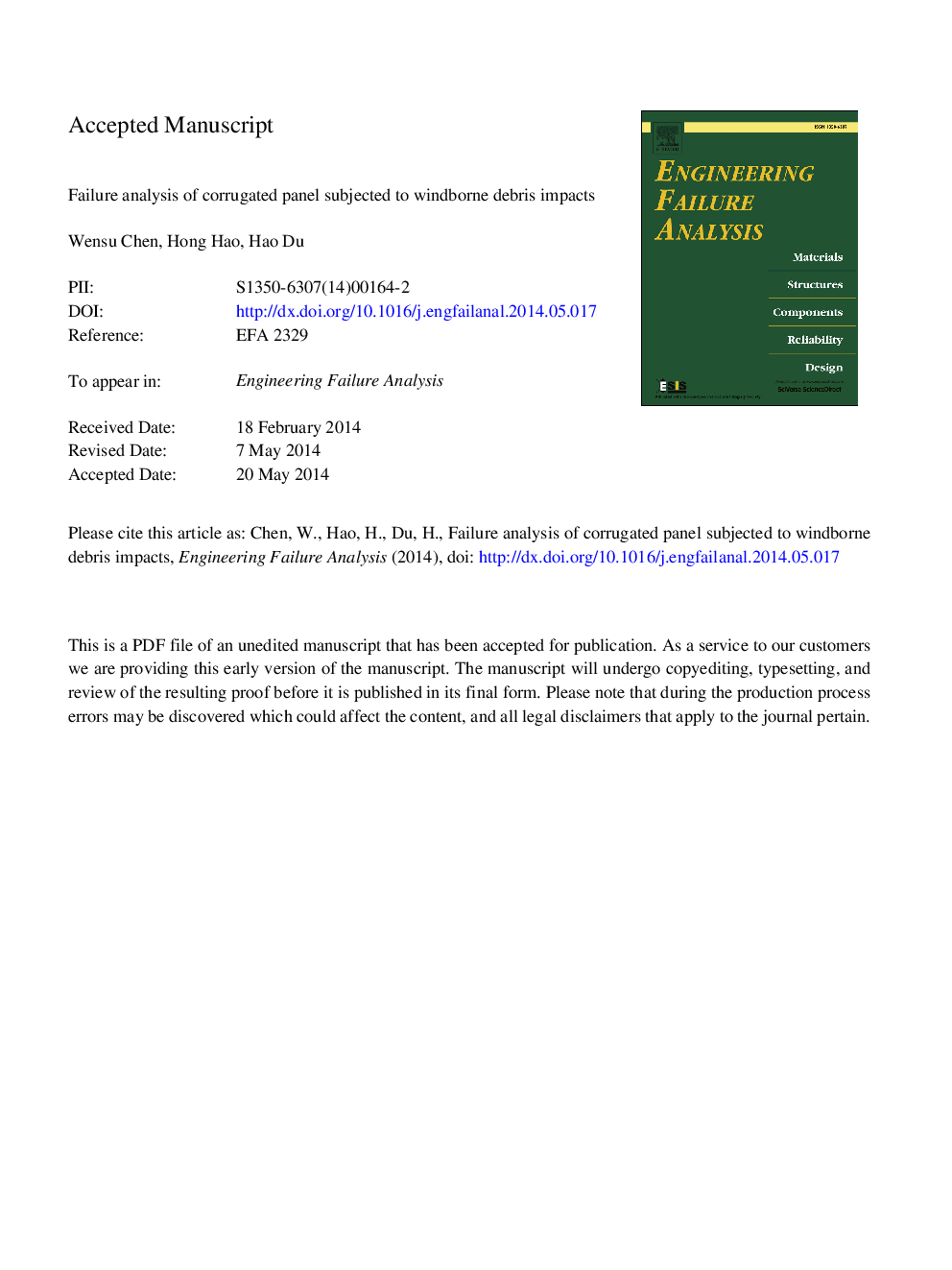| Article ID | Journal | Published Year | Pages | File Type |
|---|---|---|---|---|
| 7168404 | Engineering Failure Analysis | 2014 | 61 Pages |
Abstract
With the changing climate, more and more natural disasters such as cyclone, hurricane and typhoon take place around the world, which cause tremendous loss and damage. Damages of building structures by windborne debris impacts have been reported in almost all the previous major wind events. The windborne debris usually imposes localized impact loading and creates an opening on the building envelope, which might trigger serious damages to the building structures such as roof lift-up and collapse because strong wind pressures propagating into the structure. To withstand the impact of such extreme event, climate adaptation engineering solutions and technique need to be provided or improved for the building protection. The capacity requirement of panels to resist windborne debris impact is given in the Australian Wind Loading Code (AS/NZS 1170.2:2011) [1]. Corrugated metal panel, widely used as building envelope such as roof and wall cladding, might subject to the windborne debris impact. This study evaluates the capacity of corrugated panels to resist wind borne debris impact. Laboratory tests were carried out on corrugated metal panels of dimension 0.76Â m by 1.2Â m subjected to 4Â kg wooden projectile impacts. The effect of various impact locations, impact velocities and boundary conditions on their performance has been studied. The failure and deformation modes under various impact scenarios were observed and compared. The dynamic responses were examined based on the deformations and the strains on the panel back face. The perforation resistance capacity of panels subjected to windborne debris impact were assessed and analyzed. In addition, a numerical model was developed in LS-DYNA to simulate the response and failure of the corrugated panel under windborne debris impact. The accuracy of the numerical model was calibrated with the test data. The validated numerical model was then used to obtain the results such as impact force, boundary reaction force and energy absorption. The vulnerability curve of the corrugated panel against windborne debris impact was also derived.
Related Topics
Physical Sciences and Engineering
Engineering
Industrial and Manufacturing Engineering
Authors
Wensu Chen, Hong Hao, Hao Du,
